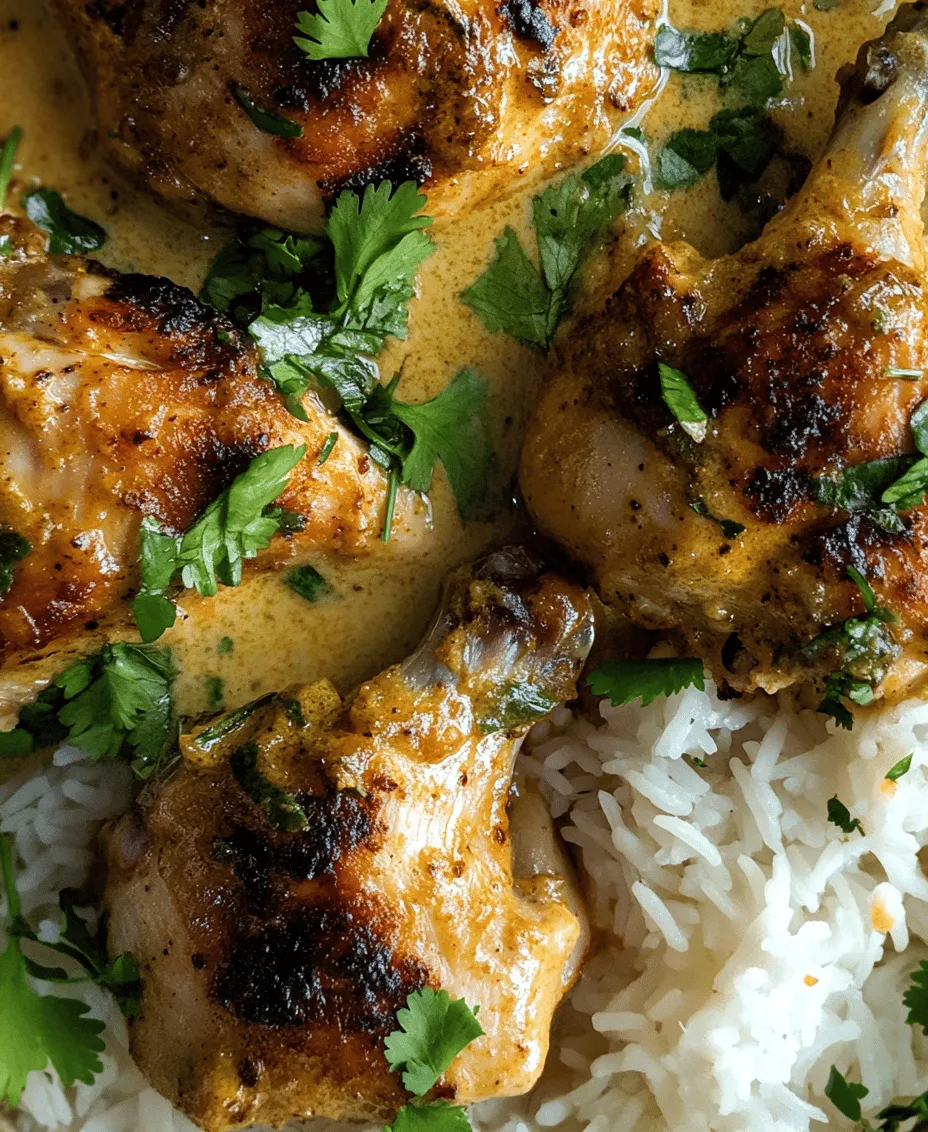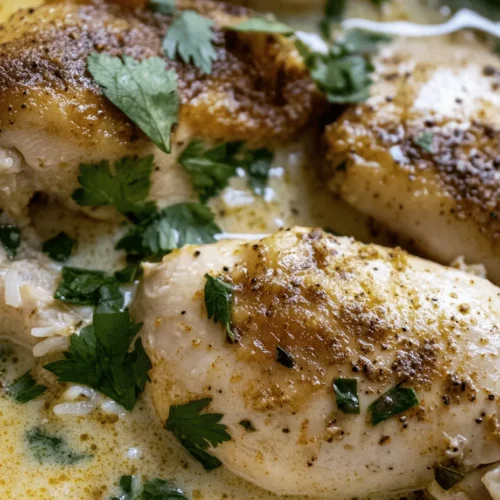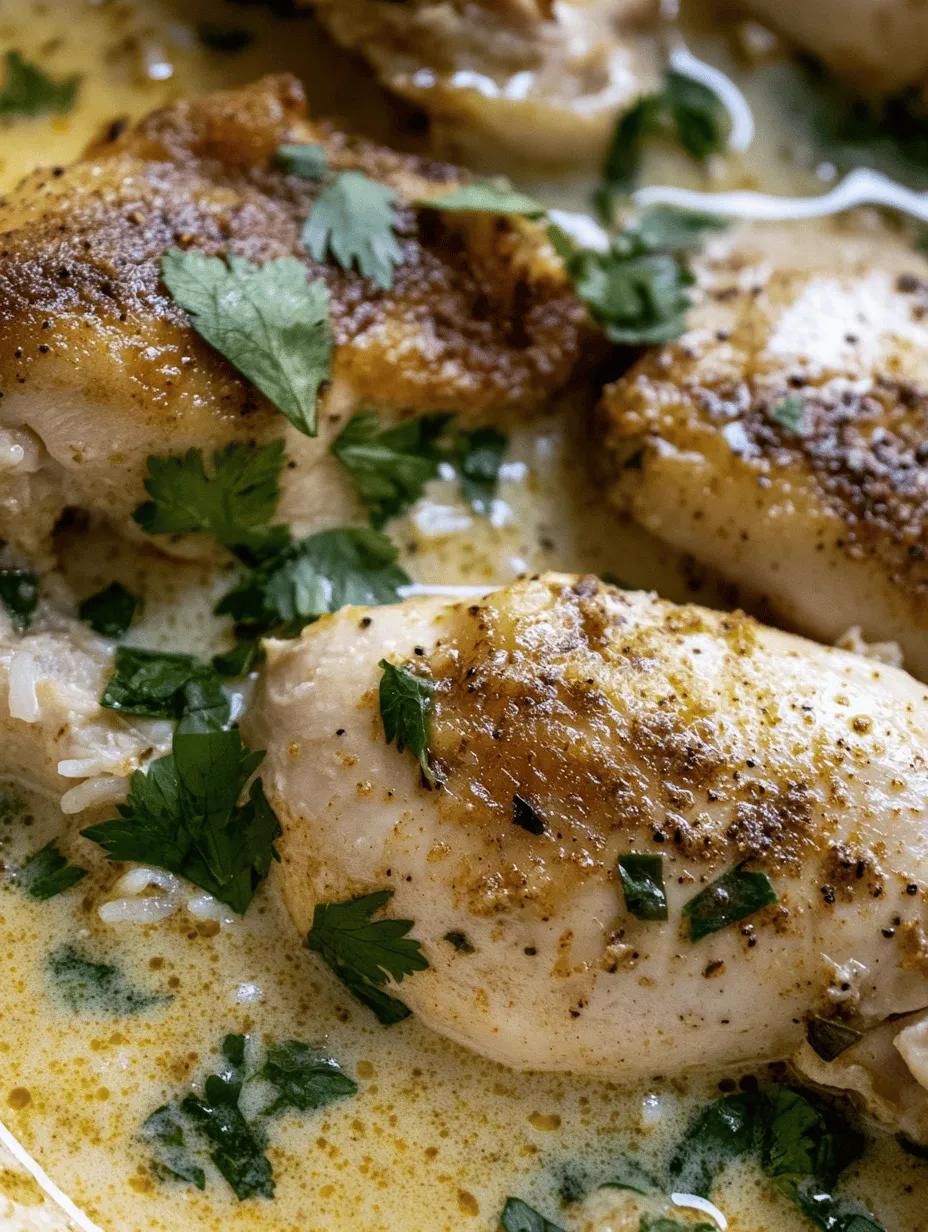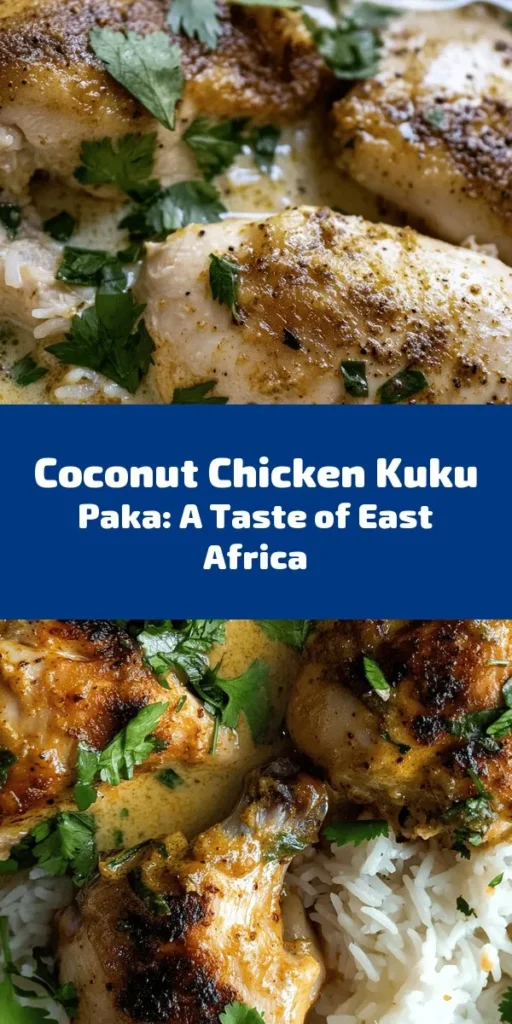Kuku Paka is a dish that encapsulates the vibrant flavors and rich culinary traditions of East Africa. Originating from coastal regions of Kenya and Tanzania, this delectable coconut chicken curry showcases a harmonious blend of spices and fresh ingredients that come together to create an unforgettable dining experience. The name “Kuku Paka” translates to “chicken in coconut,” which perfectly illustrates the heart of this dish. With its creamy coconut milk base, aromatic spices, and tender chicken, Kuku Paka is not just a meal; it’s a celebration of flavor and tradition.
Cultural Significance and Popularity
In East Africa, Kuku Paka holds a special place in the hearts (and stomachs) of many. It is often served during family gatherings, special occasions, and community festivities, where the communal spirit of sharing food is cherished. The dish reflects the region’s multicultural influences, combining local ingredients with culinary techniques from Indian and Arab cuisines, resulting in a unique fusion that appeals to diverse palates.
Moreover, Kuku Paka’s popularity extends beyond East Africa’s borders, as it has found a place in international cuisine, particularly in areas with a significant East African diaspora. It is a dish that evokes nostalgia and the warmth of home, making it a beloved recipe for those who grew up enjoying it and an exciting new dish for adventurous food lovers.
Flavor Profile
The allure of Kuku Paka lies in its complexity. The richness of coconut milk melds beautifully with the aromatic spices, creating a dish that is both comforting and invigorating. The balanced combination of heat from spices, the sweetness of coconut, and the freshness of herbs results in a multifaceted flavor experience that dances on the palate. Whether served over rice, with flatbread, or simply enjoyed on its own, Kuku Paka is a versatile dish that caters to various preferences and dietary needs.
Understanding the Ingredients
To truly appreciate Kuku Paka, one must understand the key ingredients that contribute to its distinctive taste. Each component plays a crucial role in building the dish’s flavor profile.
Chicken: The Heart of the Dish
At the core of Kuku Paka is the chicken, which serves as the primary protein. For this recipe, bone-in, skinless chicken pieces are ideal, as they provide maximum flavor and moisture during cooking. The bone adds depth to the broth while the skinless option keeps the dish lighter. Common choices include thighs, drumsticks, or a combination of both, ensuring that the chicken remains juicy and tender throughout the cooking process.
Aromatic Base: Onions, Garlic, and Ginger
The foundation of Kuku Paka’s flavor begins with a robust aromatic base. Onions, garlic, and ginger are sautéed to create a fragrant and flavorful foundation. Onions provide sweetness and depth, while garlic and ginger add a zesty, pungent kick that enhances the overall taste of the dish. This trio of aromatics is essential, as they create layers of flavor that infuse the chicken and coconut milk, resulting in a rich and satisfying sauce.
Spices: The Essence of Kuku Paka
Spices are the true essence of Kuku Paka, bringing warmth and complexity to the dish. The primary spices used include curry powder, ground coriander, ground cumin, and paprika.
– Curry Powder: This blend of spices varies by region but typically includes turmeric, coriander, cumin, and fenugreek. It imparts a warm, earthy flavor and a beautiful golden hue to the dish.
– Ground Coriander: Adds a citrusy and slightly sweet note, balancing the richness of the coconut milk.
– Ground Cumin: Offers a nutty, warm flavor that enhances the dish’s overall depth.
– Paprika: Provides a mild sweetness and vibrant color, elevating the visual appeal of Kuku Paka.
In addition to their flavor contributions, these spices also come with numerous health benefits, such as anti-inflammatory properties and digestive support, making Kuku Paka not just delicious but nutritious as well.
Coconut Milk: The Creamy Component
Coconut milk is the star ingredient that transforms Kuku Paka into a creamy, luscious dish. It provides a rich, velvety texture that envelops the chicken, enhancing its flavor and moisture. Coconut milk is naturally dairy-free, making it an excellent alternative for those with lactose intolerance or those following a vegan diet. It is also packed with essential nutrients, including healthy fats that support heart health and immune function. The creamy nature of coconut milk balances the spices, creating a harmonious sauce that is perfect for soaking up with rice or bread.
Fresh Herbs and Acidity: Balancing the Flavors
To elevate Kuku Paka’s flavor profile, fresh herbs and a splash of acidity play a crucial role. Fresh cilantro is often used as a garnish, adding a burst of freshness and color to the dish. Its citrusy notes complement the richness of the coconut milk and the warmth of the spices.
Additionally, lemon juice is commonly added to the marinade, providing a bright acidity that cuts through the richness of the coconut milk and enhances the overall flavor. This balance of flavors is essential to achieving the perfect Kuku Paka, ensuring that every bite is a delightful experience.
Step-by-Step Cooking Instructions
Now that we have an understanding of the key ingredients that make Kuku Paka so special, let’s delve into the step-by-step process of preparing this flavorful dish. Whether you’re a seasoned cook or a beginner in the kitchen, these detailed instructions will guide you through each stage of the cooking process, ensuring a successful outcome.
Marination: Setting the Flavor Foundation
The first step in preparing Kuku Paka is marinating the chicken. This process is essential for infusing flavor and ensuring that the chicken remains tender. Begin by placing the chicken pieces in a large bowl. Sprinkle them generously with salt and drizzle with fresh lemon juice. The acidity of the lemon juice not only enhances the flavor but also helps to tenderize the meat.
Allow the chicken to marinate for at least 30 minutes; however, for optimal results, marinating for a few hours or overnight in the refrigerator is recommended. This will intensify the flavors and ensure that the chicken absorbs the aromatic notes of lemon and salt.
Sautéing the Aromatics: Building Layers of Flavor
Once the chicken has marinated, it’s time to build the aromatic base that will serve as the backbone of Kuku Paka. Heat a large, heavy-bottomed pot or Dutch oven over medium heat and add a splash of cooking oil. Once the oil is hot, add finely chopped onions and sauté until they become translucent and slightly caramelized, about 5-7 minutes.
Next, add minced garlic and grated ginger, along with finely chopped green chilies for heat (if desired). Sauté for an additional 2-3 minutes until the mixture is fragrant and the garlic is golden. This step is crucial, as it creates the foundation of flavors that will permeate the chicken and sauce.
Spice Toasting: Unlocking Flavor Potential
To maximize the flavor of the spices, take a moment to toast them before adding them to the pot. This technique enhances their aroma and flavor, making the dish even more enticing. Add the curry powder, ground coriander, ground cumin, and paprika to the pot with the sautéed aromatics. Stir the spices continuously for about 1-2 minutes until they become fragrant, taking care not to let them burn.
This step is essential, as toasting the spices releases their essential oils, intensifying their flavors and allowing them to infuse the dish with warmth and complexity.
Browning the Chicken: Developing Richness
After toasting the spices, it’s time to introduce the marinated chicken to the pot. Increase the heat to medium-high and add the chicken pieces, ensuring they are evenly spaced in the pot. Allow the chicken to brown on all sides, which should take about 5-7 minutes. This browning process is vital, as it develops a rich, savory flavor that will enhance the final dish.
Once the chicken is browned, reduce the heat back to medium and add the coconut milk to the pot. Stir to combine, ensuring that the chicken is well-coated in the creamy sauce. At this stage, you can also add salt to taste, ensuring that the flavors are balanced.
With these initial steps completed, you are well on your way to creating a delicious Kuku Paka that will delight your family and friends. The next stages will involve simmering the dish to allow the flavors to meld and intensify, resulting in a comforting and savory meal that is sure to impress. Stay tuned for the continuation, where we will explore further steps in preparing this East African delight.

Incorporating Coconut Milk: Creating the Sauce
The transformative power of coconut milk in Kuku Paka cannot be overstated. This ingredient is what makes the dish rich, creamy, and deeply flavorful. To create the perfect sauce, start by adding the coconut milk to the pan after the chicken has been seared and the spices have been added. It’s crucial to use full-fat coconut milk for a richer taste and creamier texture.
Once the coconut milk is in the pan, stir it gently with the sautéed onions, garlic, ginger, and spices. This blending is not just about combining ingredients; it’s about creating a harmonious sauce where each component contributes to the overall flavor profile. The coconut milk should be incorporated gradually, allowing it to meld with the spices. As it heats up, the milk will create a luscious sauce that will coat the chicken beautifully.
For an extra layer of flavor, consider adding a splash of lime juice or tamarind paste at this stage. The acidity will cut through the richness of the coconut milk, balancing the flavors perfectly. Allow the sauce to simmer gently for a few minutes before adding the chicken back to the pan, ensuring that the spices are well-distributed and the sauce thickens slightly.
Simmering: The Cooking Process
Simmering is a crucial step in the preparation of Kuku Paka. This gradual cooking process allows the chicken to absorb all the aromatic flavors of the sauce, resulting in tender, juicy pieces of meat infused with the rich coconut and spice mixture.
After reintroducing the chicken to the pan, cover it and let it simmer on low heat for about 20-30 minutes. During this time, the chicken will cook through, absorbing the flavors from the coconut milk and spices. Stir occasionally, making sure the sauce does not stick to the bottom of the pan. If the sauce appears too thick, you can add a bit of water or additional coconut milk to achieve your desired consistency.
Make sure to check the chicken for doneness. It should reach an internal temperature of 165°F (75°C) and be tender enough to fall off the bone. The longer you let it simmer, the more the flavors will deepen, creating a wonderfully aromatic dish that fills your kitchen with tantalizing scents.
Adjusting Seasoning: Perfecting the Dish
Once the chicken is tender and the sauce has thickened, it’s time to taste and adjust the seasoning. This step is vital for achieving a well-balanced flavor profile. Use a spoon to taste the sauce, and consider the following adjustments:
1. Salt: If the dish needs more depth, a pinch of salt can enhance the flavors. Always add salt gradually, tasting as you go.
2. Acidity: If the sauce feels too rich, a squeeze of fresh lime juice can brighten it up, adding a refreshing zing.
3. Sweetness: In some cases, you may want to balance the spices by adding a touch of sugar or honey, especially if the spice heat is prominent.
4. Heat: If you prefer a spicier dish, consider adding a pinch of cayenne pepper or a sliced chili pepper.
After making your adjustments, let the dish simmer for an additional few minutes to meld the flavors together. This is your opportunity to ensure that Kuku Paka reflects your personal taste, so don’t hesitate to experiment a bit!
Garnishing and Serving: The Final Touch
Presentation is key when serving Kuku Paka, as it enhances the dining experience. Once your dish is ready, garnish it with freshly chopped cilantro or parsley. This not only adds a pop of color but also contributes a fresh element that complements the rich flavors of the dish.
Kuku Paka is traditionally served over a bed of basmati rice, which perfectly absorbs the creamy sauce. The fluffy rice acts as a neutral base, allowing the vibrant flavors of the coconut chicken to shine. To serve, place a generous scoop of rice on each plate, and ladle the Kuku Paka over the top. For an authentic touch, consider serving with a side of chapati or naan, which can be used to scoop up the delicious sauce.
Nutritional Information and Health Benefits
Kuku Paka is not only a flavorful dish but also stands out nutritionally due to its wholesome ingredients. Here’s a breakdown of the nutritional benefits of the key components in this recipe.
Chicken as a Protein Source
Chicken is an excellent source of lean protein, essential for building and repairing tissues in the body. It’s low in fat and high in essential amino acids, making it a staple in many diets. A serving of chicken breast contains approximately 26 grams of protein, which supports muscle growth and maintenance. Additionally, chicken provides important vitamins and minerals, including B vitamins (like niacin and B6) that play a vital role in energy metabolism and immune function.
Coconut Milk: Nutritional Value
Coconut milk is rich in medium-chain triglycerides (MCTs), a type of fat that can be metabolized quickly by the body for energy. This makes coconut milk a great option for those looking to maintain energy levels throughout the day. Furthermore, coconut milk contains lauric acid, which has antimicrobial and antifungal properties, potentially supporting the immune system. It also provides important nutrients, including potassium, magnesium, and iron, contributing to overall health.
Spices: Health Benefits
The spices used in Kuku Paka, such as turmeric, ginger, and garlic, are not just for flavor; they also offer numerous health benefits.
– Turmeric contains curcumin, known for its anti-inflammatory and antioxidant properties. Regular consumption of turmeric may help reduce the risk of chronic diseases.
– Ginger is well-known for its digestive health benefits, helping to alleviate nausea and improve gut health.
– Garlic has been linked to improved heart health and may help lower blood pressure due to its active compounds.
Together, these spices enhance the dish’s flavor while also contributing positively to your health.
Cultural Significance of Kuku Paka
Kuku Paka is more than just a meal; it is a dish deeply rooted in East African culture. Originating from coastal regions, particularly among Swahili communities, Kuku Paka embodies the rich culinary heritage of this area.
Regional Variations
Different regions of East Africa have their own unique takes on Kuku Paka, reflecting local ingredients and traditions. For instance, in some areas, you might find the addition of local vegetables or different spices that highlight the diverse agricultural bounty of the region. These variations showcase the adaptability of the dish, allowing it to resonate with different cultures while retaining its core essence.
Kuku Paka in Celebrations
Kuku Paka is often served during special occasions and celebrations, such as weddings, family gatherings, and religious festivities. Its communal nature encourages sharing and brings people together, making it a beloved dish for large gatherings. The aroma of Kuku Paka cooking is synonymous with family and tradition, evoking memories of joyful celebrations and togetherness.
Conclusion: Embracing the Flavors of Kuku Paka
In summary, Kuku Paka is a delightful representation of East African cuisine, showcasing the harmonious blend of spices, tender chicken, and creamy coconut milk. This dish not only tantalizes the taste buds but also holds cultural significance, making it a staple in many households.
As you explore the flavors of Kuku Paka, remember that it is not just about the ingredients; it is about the love and tradition that goes into preparing it. We encourage you to try this recipe, whether for a family dinner or a special occasion, and embrace the rich culinary heritage that Kuku Paka offers. With its delightful flavors and comforting essence, this dish is sure to become a cherished favorite in your kitchen.



